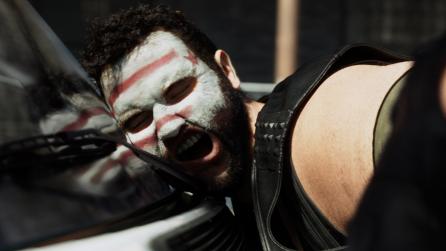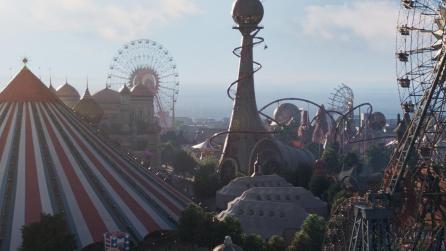In the spotlight: Christophe Brejon
Christophe Brejon on his new book CG Cinematography, life as a Lighting Artist and what the future holds for look development and lighting

With fourteen years’ experience in the visual effects industry in various lighting-based roles, Christophe Brejon is no stranger to the fundamentals and nuances of look development and lighting. His vast portfolio spans from his first feature film, Planet 51, to house-hold name titles like Happy Feet 2, The Secret Life of Pets and Lego Batman.
Christophe’s experience naturally lends itself to his role as an educator. Teaching masterclasses in Southern France, he gives insight to his students on how to master Nuke, ACES color management workflows and Guerilla Render. Christophe also practices production focused training with his students to give them a look into working studios and best lighting practice, ensuring they send their scenes to render each night and then reviewing them in the morning.
But his success doesn’t stop there.
For the past two years, Christophe has been meticulously crafting a lighting guide for budding lighters everywhere, offering extensive wisdom into the world of lighting and cinematography in visual effects.
We caught up with him on the writing process, his views on an ever-changing industry and advice for aspiring artists.
Q: Your book is now available online, could you tell us a bit more about it? What was your main mission when you started out writing?
A: It might sound strange, but the main reason was for me. I was traveling from one studio to another, discovering all these different ways of working, and I didn’t want to forget any of the advice I was given.
It started out as a simple Google Doc, which I later shared out with some colleagues for feedback. Then, once it had reached 130 pages, I started to think of its evolution and what medium I could use. It is only much later that I decided to go for a free website.

Q: Did the mission for the book change over time, or did it stay consistent throughout the writing process?
A: From the beginning, the purpose was to gather all the knowledge I could find in one place and write a Lighting Bible for CG productions. There is a massive lack of training in most studios, and barely any information on the topic, so the mission didn’t change but its form did. Until the very last weeks of writing, I changed the number and order of some chapters—all my beta readers were of great help.
Q: Where do you see it going next?
A: My end goal is to properly finish the book. Unfortunately, I had to release it a bit in a rush and I feel like there’s some very important information missing. There is so much more to explore in terms of Color and Gestalt theories, better ACES explanations and lighting principles. Hopefully all of this will be featured in version 2.0.
Q: Your book has helped burgeoning lighting artists around the world. What are the topics you feel are most important from a creative POV for new or junior artists?
Funny thing, I was talking recently with some students about just that! I gave them the same advice that I was given 18 years ago: if you know how to observe, then you will know how to create.
I feel like observation is completely underestimated nowadays. I have students showing me these great references from TV shows or movies but when they sit behind the computer, it is a completely different story. Observe carefully, in detail, and take the time to analyze why you like the picture, its composition, its colors…With that, half the job is already done.

Q: From a practical standpoint, what are the things that took the longest time to learn through production experience?
A: That’s a tough question! I would say patience. It is not character lighting nor sampling. This technical stuff is easy to learn. The most difficult thing to learn through production is patience. Why hasn’t my shot been approved? Why isn’t this tool working? Why hasn’t this great idea of mine been accepted?
Sometimes, you have to step back, take a deep breath and be patient. It is very difficult to see the bigger picture sometimes, especially as a lighter since we are the ones rendering the final image. Patience is our ally and I find it extremely hard to remember that sometimes.
Q: We recently put an article together on the look development and lighting trends for 2020. As someone on the front lines of lighting, what’s your opinion? Will any of these impact your workflow, and if so how?
A: I am not a huge believer in GPU rendering. It basically creates double the work for the R&D team, as you have to develop two render engines instead of one. Plus, our assets generally use hundreds of UDIM, SSS, which don’t render in GPU. I personally much prefer to deal with one CPU render engine, which can be just as fast. I’m not against GPU, not at all, but I have never seen a good prototype running on production assets.
Cloud rendering is a complex topic. We used Cloud Rendering on Playmobil: The Movie and The Star. Both projects had a tight schedule when it came to rendering. In this scenario, cloud rendering makes sense, but if you have a normal production schedule (like a year or so), it would be very expensive.
Regarding USD and MaterialX, I am a huge believer in these—standard formats between applications should be the norm. It makes so much sense! Finally, proceduralism is obviously the way to go when it comes to deal with thousands of assets or shots. It will not cover 100% of your needs but it is the easiest way to start.

Q: There’s a debate in the industry that increasing reliance on proceduralism runs the risk of undermining artistry and craft in look development and lighting. Do you have any thoughts on this?
A: I do believe that the industry is slowly changing. Nowadays, the trend is all about small teams and smarter ways of working. With Playmobil, we lit the movie with 12 lighters, when it used to range from fifty to a hundred lighters for a movie, doing everything manually. Proceduralism and automatization are already changing that.
In my opinion, to deal with big sets manually is just nonsense. On Playmobil, every asset was first dealt with procedurally and then detail added manually where needed. Another example of this evolution is the remarkable work of the Yard VFX on Minuscule - Mandibles from far away. A total of 25 people worked on this movie for asset creation, lighting and rendering, which is insane! The massive use of procedurals, smart tools, and choices made for a great quality film.
Q: And finally, what ‘hot topics’ do you foresee gaining traction in 2020 in look development and lighting? What are your opinions on these, and what are the implications for the industry?
A: I personally think the trending topics right now are industrialization and fast interactive rendering. The talk about Toy Story 4 at Siggraph showed some pretty good examples of those. And I think what Animal Logic did on Lego Batman is also a perfect example on the direction to follow. With productions getting shorter we need to start thinking about how to deal with hundreds of assets or rendering thousands of shots in one click.
Discover Chris Brejon’s Lighting Bible here
To try your hand at look development and lighting, discover Katana and Mari

